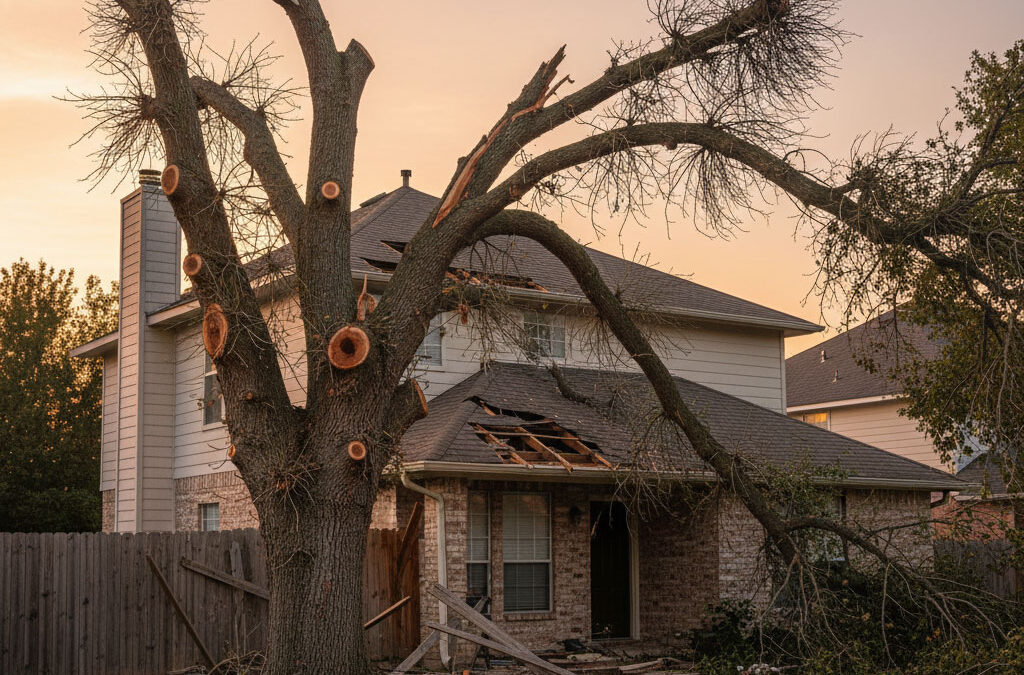Trees enhance the beauty, value, and environmental quality of any property. However, cutting or trimming trees improperly can lead to serious consequences.
Poor techniques can damage the tree, your property, or even pose risks to people nearby. Understanding the risks of improper tree cutting highlights the importance of hiring trained professionals to ensure safety and long-term health of your trees.
Structural Damage to Trees
Incorrect cutting techniques can compromise the tree’s structural integrity, making it weak and unstable.
- Cutting too close to the trunk can cause trunk damage or decay.
- Removing too many branches at once can stress the tree and affect its balance.
- Improper cuts may leave jagged wounds, increasing susceptibility to pests and disease.
A weakened tree is more likely to fall or drop branches, posing risks to your property. Professional arborists use correct techniques to maintain both the tree’s health and stability.
Property Damage
Improper tree cutting can directly harm your home, vehicles, or landscaping.
- Falling branches may break windows, damage roofs, or crush outdoor structures.
- Poorly executed removals can harm lawns, gardens, and irrigation systems.
- Uncontrolled tree falls can also affect nearby fences, sheds, and driveways.
By using careful planning and proper equipment, professionals prevent costly damage to your property. Their expertise ensures every cut is safe and controlled.
Safety Hazards
DIY or improper tree cutting poses serious safety risks to homeowners and bystanders.
- Chainsaws and heavy equipment can cause injury if not used correctly.
- Incorrectly planned cuts may result in falling branches or trees in unintended directions.
- Lack of protective gear or experience increases the chance of accidents.
Hiring trained tree service professionals reduces the risk of injury. They follow strict safety protocols to protect both workers and residents.
Spread of Disease and Pests
Improper cuts can leave trees vulnerable to infections or infestations.
- Jagged or improperly sealed cuts allow fungi and bacteria to enter the tree.
- Stress from poor cutting practices makes trees more susceptible to pests.
- Diseased or infested trees can affect neighboring trees and landscaping.
Professional arborists know how to prune and remove branches to minimize disease risks. Proper techniques help preserve the health of both individual trees and surrounding greenery.
Reduced Property Value
Neglecting proper tree care can negatively impact the appearance and value of your property.
- Unsightly wounds, broken limbs, or poorly shaped trees reduce curb appeal.
- Damage to trees can signal neglect, affecting potential buyers’ perception.
- Unsafe or unstable trees can lower property appraisal values.
By ensuring trees are cut correctly, property owners maintain both safety and aesthetic appeal. Healthy, well-maintained trees enhance the overall value of your home.
Proper Tree Cutting Protects Your Property and Safety
Improper tree cutting is more than just a cosmetic mistake, it can threaten your property, your safety, and the long-term health of your trees. From structural damage and safety hazards to disease and reduced property value, the risks are significant.
Hiring professional tree service companies ensures proper techniques, protective equipment, and expert planning are used for every job. Taking the right approach keeps your trees healthy, your property safe, and your investment secure.

